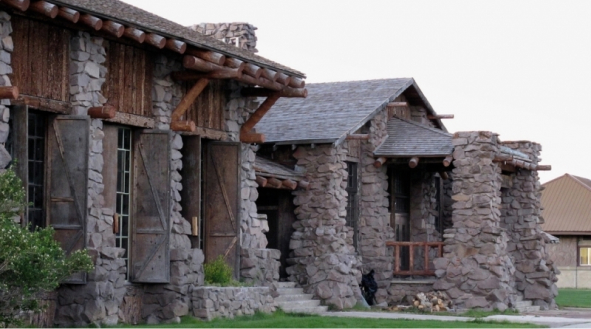A trip to Yellowstone National Park is a vacation like no other. Certainly its collection of geysers, hot springs, mud pots, and fumaroles alone constitutes a breathtaking natural phenomenon. But combined with its incredible mountain scenery, spectacular waterfalls, pristine wilderness and abundance of wildlife Yellowstone is a world-class destination.
That said, the vast majority of Yellowstone's roughly 3.5 million annual visitors stick to the park's roads, villages, and roadside walkways and trails; a method of visitation that allows one to see a mere 5% of the Park! The other 95% is accessible only by venturing into Yellowstone's backcountry, usually on foot. Then, truly, the floodgates to Yellowstone are open. More than 1,100 miles of maintained trails exist in Yellowstone, which is more than a lifetime of potential for most people.
All that can be seen from a car in Yellowstone can also be seen in the park's backcountry: majestic waterfalls, picturesque mountain scenery, geysers and hot springs, and of course wildlife. The difference is the unfettered quality of the landscape. It is a land that has been shaped by its natural processes, a land unaffected by the hands of modern civilization. To roam freely in Yellowstone's backcountry and experience the land in this form is an incredible experience.
Backpacking Yellowstone's wilderness will also significantly up the adventure factor of anyone's vacation. Touring the park on foot is a different experience altogether, one influenced by the simultaneous presence of solitude and absence of modern conveniences. There is a strong feeling of vulnerability, a sense of being naked to the forces of nature. This feeling is especially acute in Yellowstone where the weather can change in an instant and the presence of grizzly bears trumps our top-of-the-food-chain status. The result is a heightened awareness of your surroundings, an ability to take it all in more completely. Perhaps this is why, given the struggles one sometimes experiences in the midst of a backcountry journey, in hindsight the experience was one of the most rewarding and exciting of our lives.
A backcountry journey in Yellowstone demands preparedness. As alluded to above, a number of risks exist in Yellowstone's backcountry, and those risks can be mitigated through careful planning. One must be prepared for the elements, be knowledgeable about travelling in grizzly bear country, and understand the park's process for obtaining backcountry permits. For those reasons it is often convenient to hire a guide to make your arrangements and organize your trip.
If you decide to take on the rewarding challenge of planning your own backpacking trip to Yellowstone follow these steps to begin the process:
- Reference a quality Yellowstone hiking guide. This book is a good source that will help you determine the location, length, and difficulty of your hike.
- Download Yellowstone's backcountry trip planner, downloadable from Yellowstone National Park's website. The planner will help you determine which campsites you need and how to go about securing your permit.
- Learn about hiking and camping in grizzly bear country. The best place to begin is the park's website linked to above. Pages 2 and 3 of the backcountry trip planner have great information for hiking and camping in grizzly bear country. Also make sure you watch the park's bear video when you pick up your permit.
- Finally, if your backpacking experience is limited I'd suggest a resource such as Allen & Mike's Really Cool Backpackin' Book
Most importantly, bring your sense of adventure and discovery. Your backcountry experience in Yellowstone will be one not soon forgotten.
About Wildland Trekking Company: The Wildland Trekking Company has led hundreds of people through Yellowstone's backcountry, is happy to take care of the details, and will make sure you are prepared when you arrive. They also handle all the meals and outfit you for your trip.







